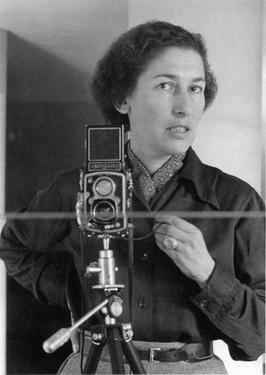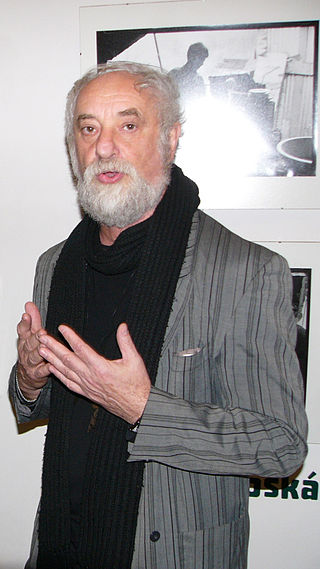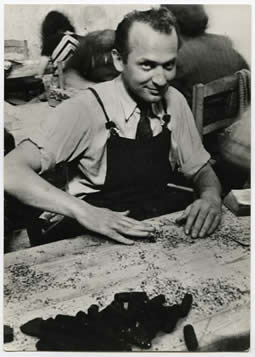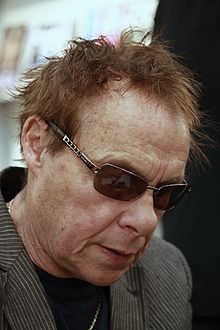
Marc Riboud was a French photographer, best known for his extensive reports on the Far East: The Three Banners of China, Face of North Vietnam, Visions of China, and In China.

Sebastião Ribeiro Salgado Júnior is a Brazilian social documentary photographer and photojournalist.

Henri Cartier-Bresson was a French artist and humanist photographer considered a master of candid photography, and an early user of 35mm film. He pioneered the genre of street photography, and viewed photography as capturing a decisive moment.

Josef Koudelka is a Czech-French photographer. He is a member of Magnum Photos and has won awards such as the Prix Nadar (1978), a Grand Prix National de la Photographie (1989), a Grand Prix Henri Cartier-Bresson (1991), and the Hasselblad Foundation International Award in Photography (1992). Exhibitions of his work have been held at the Museum of Modern Art and the International Center of Photography, New York; the Hayward Gallery, London; the Stedelijk Museum Amsterdam; and the Palais de Tokyo, Paris.
Edward Quinn (1920–1997) was born in Ireland. He lived and worked as a photographer from the 1950s, on the Côte d'Azur, during the "golden fifties" the playground of the celebrities from the world of show biz, art and business.

Juergen Teller is a German fine-art and fashion photographer. He was awarded the Citibank Prize for Photography in 2003 and received the Special Presentation International Center of Photography Infinity Award in 2018.

Adolf Zika is a Czech photographer.

Jean-Marc Bustamante is a French artist, painter, sculptor and photographer. He is a noted conceptual and installation artist and has incorporated ornamental design and architectural space in his works.

Gisèle Freund was a German-born French photographer and photojournalist, famous for her documentary photography and portraits of writers and artists. Her best-known book, Photographie et société (1974), is a expanded edition of her seminal 1936 dissertation. It was the first sociohistorical study on photography as a democratic medium of self-representation in the age of technological reproduction. With this first doctoral thesis on photography at the Sorbonne, she was one of the first women habilitated there.

Pierre Bismuth is a French artist and filmmaker based in Brussels. His practice can be placed in the tradition of conceptual art and appropriation art. His work uses a variety of media and materials, including painting, sculpture, collage, video, architecture, performance, music, and film. He is best known for being among the authors of the story for Eternal Sunshine of the Spotless Mind (2004), for which he won the Academy Award for Best Original Screenplay alongside Michel Gondry and Charlie Kaufman. Bismuth made his directorial debut with the 2016 feature film Where is Rocky II?.

Markéta Luskačová is a Czech photographer known for her series of photographs taken in Slovakia, Britain and elsewhere. Considered one of the best Czech social photographers to date, since the 1990s she has photographed children in the Czech Republic, Slovakia, and also Poland.

Jindřich Štreit is a Czech photographer and pedagogue known for his documentary photography. He concentrates on documenting the rural life and people of Czech villages. He is considered one of the most important exponents of Czech documentary photography.

Viktor Kolář is a Czech photographer. Kolář, along with Jindřich Štreit, is considered one of the most important exponents of Czech documentary photography. In his works, Kolář focuses mainly on depicting urban life in the Ostrava region.

Jaroslav Beneš is a Czech photographer and co-founder of the photographic group called Český dřevák.
Jana Farmanová is a Slovak contemporary figurative painter who has been called one of the most influential painters of contemporary Slovak and Czech art scene.

Suzanne Pastor is an artist of German-American descent based in Prague, Czech Republic. She is known for her three-dimensional approach to photography, especially her glass book sculptures that explore text-image combinations, layering of memory, sequencing. Photographs of understated poetic surrealist nature have been hand-colored, ripped, layered, folded, nailed, or combined with fragments from 19th-century photographs, text fragments or other objects.
Peter Zimmermann is a German painter, sculptor, object artist and university professor.

Jacques Hérold was a prominent surrealist painter born in Piatra Neamț, Romania.

Jiří Valenta was a Czech painter, printmaker and photographer. After the Warsaw Pact invasion of Czechoslovakia he emigrated to Germany. From 1972 until his death he lived in Cologne.
Yvonne Chevalier was a French magazine photographer who was active from 1929 to 1970.

















